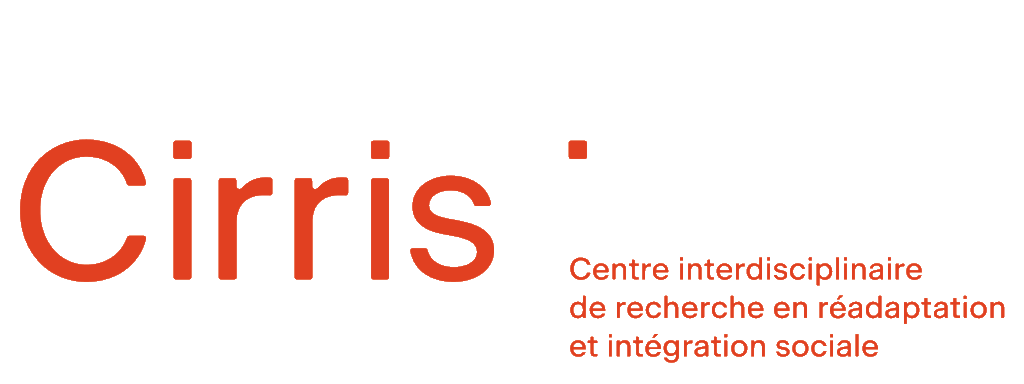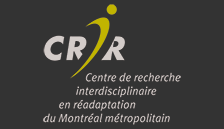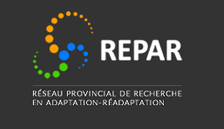Hiking trails: towards an accessible classification
Abstract
The present project is structured around a rigorous review of the literature in order to identify qualitative and quantitative indicators associated with the development of a classification of hiking trails. The classification will be based on the level of difficulty, in relation to the needs, strengths and characteristics of hikers or users with disabilities as well as the use of adapted equipment (Jöelette, Dahü, bicycle, etc.).
The project includes testing the indicators of this classification in local trails with different disabled users. It aims to facilitate and increase the practice of hiking and walking on local trails, strengthening the autonomy of disabled users, while ensuring the safety of the practice areas.
Goals
This research project aims to:
- Conduct a review of classifications (structure, indicators, target audience) in the scientific literature and existing indicators among existing classifications of trails;
- Identify the indicators to be taken into account, particularly with regard to the layout, the use of adapted equipment on hiking trails and their topology (width of the terrain, degree of horizontal inclination, gradient, type of surface, distance, etc.);
- Identify the hikers’ physiological indicators to be taken into account (HR and HRV, blood pressure, fatigue level, energy level, oxygen saturation, etc.);
- Test and validate the indicators (qualitative and quantitative) on a local trail with a group of people with various disabilities;
Develop and propose a clear and precise classification of proximity trails for a clientele with disabilities with or without adapted equipment; - Produce a set of specifications for the developed classification.
Global progress
Review of the literature
Development of indicators
Ethics committee
Recruitment and experimentation on proximity trails
Analysis of the results
Drafting of the specifications and dissemination and promotion of the results
Team members
Chercheur·euse·s principal·e·s :
- Hélène Carbonneau, Université du Québec à Trois-Rivières, Laboratoire interdisciplinaire de recherche sur l’expérience inclusive de loisir ; REPAR
- Tommy Chevrette, Université du Québec à Chicoutimi
Partenaire principal :
- Alexandra Gilbert, Directrice générale adjointe, Association québécoise pour le loisir des personnes handicapées (AQLPH)
Co-chercheur·euse :
- Frédéric Reichhart, Institut national supérieur de formation et de recherche pour l’éducation des jeunes handicapés et les enseignements adaptés (INSHEA), Suresnes, France
Co-partenaires :
- Amélie Richard, ARLPH Chaudière-Appalaches, Comité plein air du réseau des IRLPH
- Jacques Laberge, ARLPH Capitale-Nationale, Comité plein air du réseau des IRLPH
- Luce Thériault, URLS Gaspésie–Îles-de-la-Madeleine, Comité plein air du réseau des IRLPH
- Hélène Houde, URLS Mauricie, Comité plein air du réseau des IRLPH
- Céline Archambault, ARLPH Côte-Nord, Comité plein air du réseau des IRLPH
- Marianne Roffi, ARLPH Laurentides, Comité plein air du réseau des IRLPH
Scientific sectors
Innovation stages
- Émergence
All projects
- Accès à l’information et à sa compréhension pour une société inclusive
- Accompagnement par les pairs pour les personnes vivant avec la schizophrénie
- Co-development of intergenerational activities to break with ageism and support the social participation of people living with the after-effects of a traumatic brain injury.
- Action-research for the implementation of a hearing aid valorization program offered in the community and aimed at seniors with a hearing loss
- Improving the accessibility of information and communication in the Montréal Museum of Fine Arts
- Améliorer la connaissance de l’expérience utilisateur d’électroménagers pour des personnes vivant avec une déficience visuelle
- Améliorer la qualité de vie et la participation sociale des personnes en situation de handicap : identification des besoins à intégrer aux applications mobiles
- Offering learning opportunities adapted to autistic children: a lever for social participation
- Autisme et vieillissement : analyse des indicateurs de santé et de bien-être des personnes
- Para-athlete Technology Needs
- CARE PLAY: Community And REsearch PLAYing together using physical literacy knowledge translation tools targeting children with disabilities in Quebec
- Co-construction d’un cours de danse adaptée dans la communauté pour les enfants avec la paralysie cérébrale : Faire tomber les barrières
- Co-construction d’un programme de formation continue des acteurs municipaux en lien avec les plans d’action d’accessibilité universelle
- Co-construction of tools to foster inclusive environments for the social participation of adults with disabilities- in the context of gender and sexual diversity
- Co-constructing Neuroinclusion: Creating and piloting a tool to assess accessibility and inclusivity
- Co-Creation of Leisure Experience in an Inclusive and Accessible Theatre Space: The Case of the Segal Centre for Performing Arts.
- Co-développement d’ateliers pour favoriser la connaissance de soi et la communication des adolescents avec un TDL
- Co-development of workshops to promote psychological well-being after a stroke
- Co-development of an active listening training for Autism Support volunteers
- Coconstruire des outils adaptés pour favoriser le pouvoir d’agir des personnes vulnérables atteintes de lombalgie.
- Codéveloppement d’une trousse d’outils pour soutenir l’émergence de tierces personnes inclusives en milieux de loisir.
- Community matters: Promoting social participation for individuals living with early dementia and their partners.
- Comprendre et évaluer un camp intégrant intervention orthophonique et pairaidance en plein air pour les jeunes qui bégaient
- Understand and make others understand: Operationalizing an immersive design fiction tool to promote social participation by deaf people
- Connexion Spectrum : la sexualité et les saines relations
- Contraintes biomécaniques du basketball en fauteuil roulant
- De l’expérience à l’expertise : comprendre et construire les savoirs professionnels d’accompagnement pour renforcer l’engagement des superviseurs.es en entreprise adaptée
- Co-design of an Assistive Internet Navigation Device for People with Visual Impairments
- For truly inclusive research: developing a training program co-developed with adults with intellectual disabilities
- Étude de cas en surdicécité visant à tester la faisabilité clinique, sociale et économique de nouvelles modalités de communication en face-à-face et à distance
- Exploring cognitive-social factors underlying pedestrian navigation following chronic moderate-to-severe traumatic brain injury (m/sTBI) using virtual environments
- Favoriser l’autodétermination lors de l’apprentissage de la conduite automobile chez les jeunes adultes ayant des incapacités
- Staff training and adapted physical activity
- Formation et familiarisation à l’utilisation du réseau régulier de transport en commun : un état de la situation des besoins et des ressources pour les personnes ayant des incapacités.
- Formation/entrainement pour faciliter l’utilisation des réseaux de bus et de métro accessibles par des personnes ayant des limitations fonctionnelles motrices
- Adapted physical activity for community organizations
- Identifying the Fundamental Movement Skills for Pediatric Manual Wheelchair Users: A Step Towards the Development of Inclusive Physical Education and Social Participation
- Impacts d’orthèses robotisées des membres supérieurs
- Inclusion sociale par l’activité physique en plein air chez les enfants atteints de trouble de développement de la coordination
- Artificial intelligence for people with Parkinson’s disease
- L’expérience des personnes en situation de handicap lors du processus de complétion du formulaire CIPH auprès de leur médecin de famille
- The Mutual Aid Brigade: a vehicle for a stable, safe and healthy home.
- Le Café-IN : carrefour d’échange et de partages pour l’inclusion sociale des personnes ayant un traumatisme craniocérébral
- Les déterminants d’une expérience inclusive dans des ateliers créatifs : le cas du réseau des Bibliothèques de Montréal
- Mobilizing the community, to design a support ecosystem adapted to women who are victims of domestic violence and have suffered a traumatic brain injury.
- Mon futur chez-moi en 3D – Map It
- Musées inclusifs : un état de la situation de l’accessibilité universelle dans les musées du Québec
- Musique mécatronique
- Participation sociale des personnes ayant des incapacités dans la dynamique de développement régional inclusif
- Fatherhood, co-parenting and disability: what are the experiences of fathers with disabilities in Quebec?
- Pour une salle de classe inclusive
- Projet ceinture intelligente – Smartbelt
- Promoting Audiodiversity: The Right to (Fair) Self-Representation in the Media
- Recherche participative à base communautaire pour faciliter la neuroinclusion autour d’un projet de logement social pour adultes autistes en quête d’autonomie
- Recommendations for an inclusive digital budgeting assistance solution for individuals with traumatic brain injury.
- Réfléchir pour agir ensemble en formation et en sensibilisation
- Without taboos: Uniting for the inclusion of the sexual experiences and needs of adults with motor disabilities in sexology and rehabilitation
- Hiking trails: towards an accessible classification
- Soutenir ensemble la mobilité d’ainés présentant des incapacités: comment favoriser leur utilisation du transport en commun et leur participation sociale?
- Spina Bifida and aging: co-development of a toolbox
- Sport and rehabilitation
- Transition vers l’inclusion
- An Exploratory Study of Deaf and Hard of Hearing Women’s Access to Social Services
- Learning unit and inclusive work environment
- Utilisation des technologies de l’information et de la communication (TIC) d’usage courant par les personnes ayant une surdité
- Valoriser les pratiques quotidiennes des parents d’enfants ayant des particularités développementales : la créativité parentale comme moteur d’inclusion sociale
- Vers un avatar pour l’interprétation en langue parlée complétée : innovation et accessibilité pour les personnes sourdes et malentendantes
- Visitabilité des commerces
- Évaluation des exigences biomécaniques et physiologiques du ski paranordique





